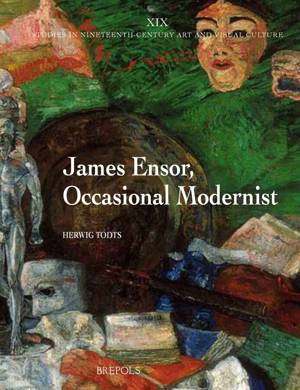
Je cadeautjes zeker op tijd in huis hebben voor de feestdagen? Kom langs in onze winkels en vind het perfecte geschenk!
- Afhalen na 1 uur in een winkel met voorraad
- Gratis thuislevering in België vanaf € 30
- Ruim aanbod met 7 miljoen producten
Je cadeautjes zeker op tijd in huis hebben voor de feestdagen? Kom langs in onze winkels en vind het perfecte geschenk!
- Afhalen na 1 uur in een winkel met voorraad
- Gratis thuislevering in België vanaf € 30
- Ruim aanbod met 7 miljoen producten
Zoeken
James Ensor, Occasional Modernist
Ensor's Artistic and Social Ideas and of the Interpretation of His Art
Herwig Todts
€ 95,01
+ 190 punten
Omschrijving
In the course of the twentieth century, under the influence of the increasing success of Modernism, a misleading image of James Ensor emerged. One might even say that Ensor was confined within a modernist 'straitjacket'. In order to understand the artist's motivations, this book follows the advice given to the art critic Andre De Ridder by Ensor himself in 1930: 'I recommend you re-read Les Ecrits de James Ensor, where I explain my research and defend my ideas'. Ensor's writings can roughly be divided into two categories - his letters and 'les ecrits', encompassing his journalistic work, satirical exhibition reviews, comical speeches, words of thanks and praise, and open letters in brochures. The analysis of Ensor's writings is no small task, for he gave little attention to structure and coherence, and employed a complex 'wondermiraclelikefulistic' language - archaisms, neologisms, staggering vitriolic rants, hyperboles, from which the essence of his personal views and beliefs is often difficult to distill. Nevertheless, his writings are a crucial source of knowledge on his opinions on Christian faith, rationality, hypocrisy, the dangers of an emerging Flemish nationalism, animal cruelty, the destruction of natural beauty and ancient monuments, and a number of other topics. Ensor believed art ought to be a source of 'ravishment' for both the viewer and the artist, and continually defended the right of the latter to create an incoherent oeuvre, experimenting with ever new and diverse 'manieres', styles, subjects, techniques and genres. This book explores the artist's writings, ideas and works in greater depth than they have hitherto enjoyed in art-historical scholarship.
Specificaties
Betrokkenen
- Auteur(s):
- Uitgeverij:
Inhoud
- Aantal bladzijden:
- 448
- Taal:
- Engels
- Reeks:
- Reeksnummer:
- nr. 1
- Geïllustreerd:
- Ja
Eigenschappen
- Productcode (EAN):
- 9782503570303
- Verschijningsdatum:
- 17/01/2019
- Uitvoering:
- Hardcover
- Formaat:
- Genaaid
- Afmetingen:
- 224 mm x 287 mm
- Gewicht:
- 2154 g

Alleen bij Standaard Boekhandel
+ 190 punten op je klantenkaart van Standaard Boekhandel
Beoordelingen
We publiceren alleen reviews die voldoen aan de voorwaarden voor reviews. Bekijk onze voorwaarden voor reviews.









